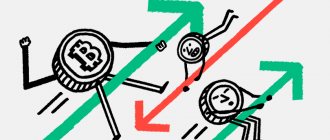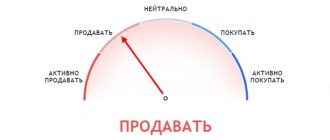Default is the inability to fulfill obligations to creditors, lack of solvency, the initial stage of bankruptcy. This term can be applied to individuals or companies, or to entire countries.
The mechanism of default is the subject of study by economists and financial market specialists. Today we will talk about a government default in simple words: how to determine its approach, how a default differs from a collapse of the national currency, and how to protect your capital in such difficult times.
What is default
Default (English default - non-payment) - refusal to fulfill obligations stipulated by the document containing the terms of the loan. In other words, this is a situation in which the debtor is unable to repay the debt on time and cannot determine the deadline for repaying the loan. Here's a simple example: a person took out a mortgage and was left without work. Then he asked for a deferment and the bank agreed. But the citizen did not find a job within the agreed time frame, and the debt began to grow. It is quite difficult to confiscate credit housing if it is the only one. Thus, the citizen cannot repay the mortgage and becomes bankrupt.
Another example is that a company purchased goods with deferred payment. As a result of mismanagement, cash flows were reduced and revenues were insufficient to cover the debt. It was not possible to return the product because it has an expiration date. The result is a refusal to pay accounts payable, or default, and then the stage of bankruptcy.
Government default is the inability of a country to pay external debt (loans from other countries) and internal debt (payments on government bonds).
So, in simple terms, default is the lack of funds to satisfy the demands of creditors. Next, let's look at the history of economic crises that led to defaults.
History of defaults
Sources of budget revenues are tax revenues, income from resource exports, as well as internal and external loans.
Public external debt is funds borrowed from foreign banks, denominated in foreign currency. Domestic debt is government-issued obligations (usually bonds) in national currency.
The history of defaults dates back to the Middle Ages. As a rule, defaults arose due to wars. Today we will look at examples from peacetime - recent decades. And let's start with Russia.
1998 in Russia
The events of 1998 are well remembered by many who were over 10 years old at that time. But not everyone knows what their economic prerequisites are. The default date was August 17, 1998, but it all started much earlier.
After the collapse of the USSR, the country was in dire need of funds. The national debt was rapidly increasing, and there was no way to repay it in a timely manner, since energy prices were low and domestic production was completely destroyed.
By 1998, liabilities to foreign creditors amounted to 36 billion USD. A little earlier, in 1997, the Asian financial crisis occurred, which by the end of the year spread to the world economy. Major indices are falling, in particular the Dow Jones index. And at the same time, the yield of GKOs (government short-term bonds) is growing, by selling which the government replenishes the budget.
At the beginning of 1998, the refinancing rate increases to 42%. In this way, the country's leadership is trying to avoid a collapse of the national currency. The IMF issues a $700 million loan to Russia. Oil prices continue to fall.
Payments on state bonds, the yield of which reaches 100% by July, make up a significant part of budget expenditures. In early August, the IMF provides Russia with another loan, the funds of which are used to buy back state debt obligations and maintain the exchange rate of the national currency. There is a short respite: oil prices turn upward for the first time in a long time, and the government takes a vacation.
By mid-August, Russian banks receive warnings from foreign credit institutions regarding the repayment of loans secured by GKOs. Banks begin to buy currency and sell bonds. On August 16, a decision is made that it is impossible to maintain the ruble exchange rate, and on August 17, a default is declared. A “currency corridor” is established ranging from 6 to 9.5 rubles per dollar, and already in September a decision is made to completely abandon the support of the national currency, and the ruble goes into free fall. The currency corridor is cancelled.
The economy was partially restored by early 2000 thanks to revenues from oil exports. By this time, GDP had grown by 10% due to the devaluation of the ruble, which ended only in 2002. Further strengthening of the ruble continued until 2008, when the world was hit by a global economic crisis.
Discussions about prospects
Lately, economists have often debated whether there will be a default in Russia in 2016. These discussions are not unfounded, since the country is experiencing economic difficulties, inflation is rising, and the price of oil is decreasing on the world market. As statistics show, the income of the average citizen of the Russian Federation has decreased significantly, and some residents have completely lost their source of income due to the reduction. Prices for various products have increased.
As for domestic production, only 30% of it is in Russia, and the rest is purchased abroad. But at the moment, the lion's share of imports has been prohibited due to the imposition of sanctions. In addition, popular agencies presented the world community with a very low rating of the country, which affected its authority.
However, despite all these indicators, many analysts are confident that things will not come to a default in Russia, because external debts have been paid. And in case of a crisis, gold and foreign exchange reserves have been accumulated in advance, which are a kind of safety net.
Reasons for state default
- Reduction in budget revenues due to the influence of the shadow economy and increased taxes.
- An increase in government spending and the formation of a budget deficit, which forces borrowing from foreign creditors.
- Political reasons. These include incorrect strategies that include increasing internal and external debt, economic sanctions from other states, etc.
- Sharp fluctuations in the Central Bank key rate. Strictly speaking, this is one of the signs of a default already beginning.
- Force majeure: military actions and the consequences of wars, pandemics, the impact of the global crisis, etc.
Varieties
There are two types of default - ordinary and technical.
Simple default
A simple default means that the debtor has nothing to pay off his debt. Moreover, there are no funds available to pay off debts. In simple words, this is the bankruptcy of a company or individual. At the state level, a simple default involves precisely the refusal to satisfy the claims of creditors. The Iceland example above clearly illustrates a typical simple default. In this case, the interests of ordinary citizens are affected less than in a technical default.
Technical default
A technical default is when “there is no money now, but this is a temporary phenomenon, and you need to do everything you can to make this money appear.” As an example, we can take Greece, which, at the cost of tough economic policies aimed at deteriorating the quality of life of the population, coped with the crisis.
As for the default of the Russian ruble in simple terms, this phenomenon is also temporary, since the exchange rate of the Russian currency is very dependent on the cost of natural raw materials, which, one way or another, will always be needed. Therefore, the Russian economy develops in cycles, the duration of which is approximately 4-8 years.
Sometimes a technical default turns into downtime, when a country cannot cope with its debt burden for a long time and declares a complete inability to repay creditors’ claims.
Types of default situations
Economists distinguish two types of default - ordinary and technical.
- Technical default arises due to temporary difficulties. The borrower is ready to fulfill its obligations, but currently has some problems.
In the case of individuals, this situation often arises when salaries are delayed. When concluding a loan agreement, employees often tie the monthly payment date to the day they receive their earnings. Late transfer of money leads to violation of the terms of the loan. However, the receipt of funds after a short period of time (what is this?) corrects the situation.The reasons for a technical default may be the oversight of employees, a failure of the payment system, or unforeseen circumstances. Usually the situation quickly resolves and has no consequences.
- Ordinary default results from the debtor's inability to fulfill its obligations. There are no funds to pay the debt, and none are expected. In simple words, ordinary default is a situation that is close to bankruptcy, that is, declaring the debtor insolvent in court. Only competent and decisive actions by crisis managers can correct the situation.
According to the category of the borrower, default can be:
- sovereign (state);
- corporate;
- banking, etc.
Sovereign default is also called level 1 default. It affects all citizens of the country and has negative consequences on a global scale.
Consequences
- Decreased confidence in the borrower. This also applies to defaults at the state level - the state’s credit rating falls.
- Worsening economic situation: rising unemployment, bankruptcy of companies, decreasing purchasing power, increasing tax burden on the population.
- Outflow of investments.
All these are negative consequences, but there are also positive aspects:
- Development of domestic production after foreign partners leave the market.
- The money that was planned to be used to repay loans can be used for your own needs.
- Reducing the number of companies created for the purpose of tax evasion.
Decoding the concept
First, let's analyze what default is in simple terms. Throughout the world, this concept means a situation where the debtor declares his inability to repay the loan. A similar problem can arise both for one person and for a large company. The most global level is a default in an entire state, which takes out loans to develop and support its own economy, timely provision of social payments, etc.
If a default occurs in a country, then usually its government will try to use any means to avoid such a situation. However, the result is sometimes disastrous, and the decisions or actions taken are not justified. In this case, very negative consequences are possible.
How to determine the approach of default
Default is a phenomenon that rarely occurs spontaneously. In most cases, there are some signs that you should pay attention to in order to protect your capital from depreciation. Let us highlight several early signs of an impending default in the economy at different levels:
Organizations
- increase in accounts receivable, problems with debt payment by key customers;
- delays in payment of wages, accounts payable; general reduction in cash flows;
- drop in revenue and profit from sales.
Let me draw your attention to the fact that these factors do not necessarily mean that the company will default. Sometimes they are due to seasonality, changes in legislation, changes in management and other reasons. As for comparing the results of an organization’s activities for different periods, such an analysis should be carried out according to operational (management accounting) data, since official reporting is prepared once a year.
States
The prerequisites for default at the state level are as follows:
- abundance of imported goods. In Russia, this usually happens when the national currency is artificially maintained;
- followed by jumps in foreign exchange rates;
- sharp fluctuations in the refinancing rate;
- a decline in yields, and later a reduction in payments on government debt obligations;
- budget deficit;
- increase in external debt, incl. at the corporate level (companies with state participation are increasing their debt to foreign counterparties);
- political conflicts.
How to protect yourself from government default
The default is most sensitive for ordinary citizens - those who work on a salary and receive income in rubles. Inflation eats up all indexations (if, of course, the employer indexes wages), and in most cases purchasing power falls several times. What can you do to protect yourself and your savings?
- Purchasing currency. During a crisis, the dollar and euro rise, and the ruble falls in relation to them. Therefore, the currency will protect your funds from depreciation.
- Purchase of real estate. Real estate is a source of income that will save you during a crisis, with the risk of losing your job. In addition, real estate assets rarely depreciate in value. This is a long-term investment that will provide passive income for many years.
- Diversification of the investment portfolio and acquisition of protective assets. This is discussed in detail in the article “A Protective Asset During a Recession.” Defensive assets include some types of foreign currencies, precious metals, real estate, corporate debt and bonds of foreign companies.
Banks are closing en masse in Russia: forecast for 2022
8% of Russian banks may close by the fall of next year. The main phase of cessation of activity by 28 credit institutions in Russia is considered to be October 2022.
The Expert RA rating agency conducted a study and found that in 2022 banks could receive unprecedented income, 1.5 times higher than the year before. According to these forecasts, this time credit institutions will receive about 2.5 trillion rubles.
But despite this, 45 banks closed in the last period. The Central Bank took away the license of 32 of them, 7 voluntarily refused to continue their activities, and 6 joined other companies.
Default and bankruptcy - what's the difference?
At the private and corporate level, default and bankruptcy of an organization are almost identical concepts. If you can't pay your debts, you're bankrupt. It's simple.
Another thing is that the bankruptcy procedure takes some time. During this period, the organization appoints a bankruptcy trustee who takes measures for the financial recovery of the company and works with the claims of creditors.
But for the state, default does not mean bankruptcy. In most cases, default is associated with the depreciation of the national currency. For example, for Russia, default in simple terms means the fall of the ruble. In other words, the ruble is not quoted on international markets. But in the situation in 1998, our country was not bankrupt, since, if it wanted, it could sell part of its raw material deposits and cover its debts.
Bankruptcy is the lack of liquid property. Let's return to individuals: a person has accumulated several loans and cannot close them because he lost his job. But he has real estate in which he does not live. Then the collectors may oblige the citizen to sell this property in order to repay bank loans. And if a person only has housing where he currently lives, it makes sense to start bankruptcy proceedings.
Thus, a government default does not mean bankruptcy of the country, since each country has assets with which it can pay off creditors. But such radical measures are usually not taken, because... they infringe on the interests of ordinary citizens.
Zyuganov predicted a credit default for Russia
Gennady Zyuganov is confident that the Russian authorities are afraid of a credit default. It is for this purpose that the widespread use of QR codes is being introduced, and not in order to protect Russians from coronavirus infection.
According to the leader of the Communist Party faction, almost 70% of the working population of the Russian Federation today have loans and borrowings. Moreover, it is becoming harder and harder for people to fulfill their financial obligations. Some borrowers have no choice but to take out new loans to pay off old loans, thereby increasing their credit burden.
Zyuganov gave more specific figures. He says that today there are about 45 million Russians in “credit bondage”.
If the situation does not change, then very soon Russia will face a credit default. People simply will not be able to pay their loans on time. Debts will continue to accumulate, which will lead to financial insolvency of borrowers.
Let us recall that Gennady Zyuganov is an ardent opponent of QR codes introduced by the Russian authorities. According to him, supporters of the Third Reich came up with the idea of assigning numbers to prisoners. His statements were objected to by supporters of the V1V2 project. They accused the leader of the Communist Party of the Russian Federation of ignorance of history, since it was Nazi Germany that completely rejected vaccination and urged people not to get vaccinated.
Examples
This article has already given examples of government defaults. For reference, here are a few more brief examples.
- Mexico, 1982. The reasons for the default are the fall in oil prices and the export of capital. The amount of external debt is $80 billion.
- Brazil, 1987. Default of $68 billion (external debt). The reason is the wrong policy of the Central Bank.
- Ecuador, 1999. The amount of domestic debt is $6.5 billion. The reasons are the Asian crisis and the fall in coffee exports.











